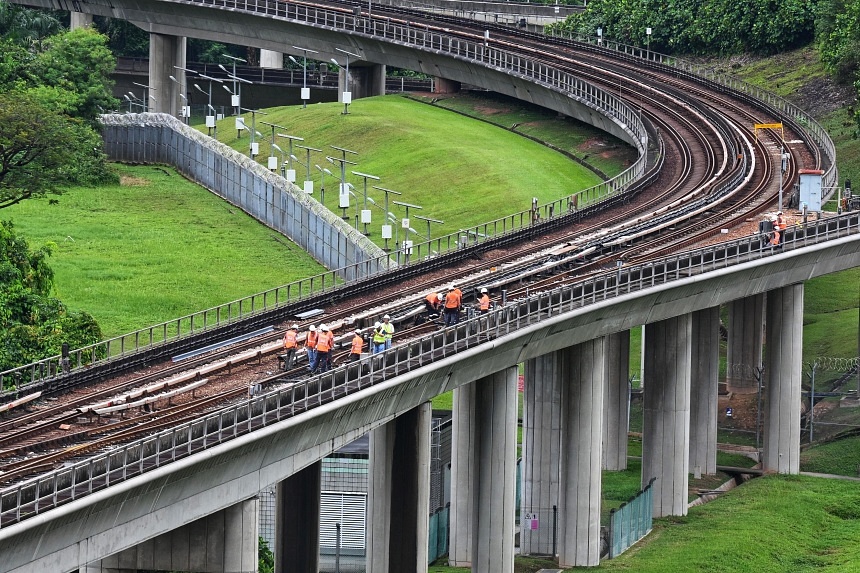SINGAPORE – Train services along a four-station stretch of the East-West Line between Jurong East and Buona Vista will remain disrupted over the weekend, in a breakdown that has affected the commutes of more than 1.3 million passengers so far.
The disruption was caused by a faulty train that was returning to Ulu Pandan Depot on Sept 25. A defective axle box – a component on a train’s undercarriage – fell out near Dover station. This caused the undercarriage, or bogie, to go off the rails.
It left in its wake extensive damage to the tracks and trackside equipment.
How did the axle box become dislodged from the bogie, and was the incident preventable, given the widespread use of preventive technology in rail maintenance?
These are among the questions that the probe into the serious incident must answer.
Preventive maintenance has been a focus for SMRT. About nine years ago, for instance, the rail operator adopted a monitoring system that deploys sensors to scan the entire train fleet on the North-South and East-West lines for train wheel and axle defects. Axles connect the wheels of a train.
While it is unclear if such a system could have detected a defective axle box, the fact is that SMRT has been using technology to shore up its rail maintenance and better predict when parts will fail and need to be replaced.
The North-South and East-West lines have also just undergone a $2.6 billion renewal programme of its six core systems.
These included replacing sleepers that hold the running rail in place, changing the third rail that supplies power to trains, upgrading the signalling system, and renewing the power-supply system.
Replacement of older trains is also part of the renewal programme, and will be rolled out progressively till the end of 2026. The faulty train in question was a first-generation Kawasaki Heavy Industries workhorse of more than 35 years, and there are 48 others still in service.
It is the first time a defective axle box has dislodged from an SMRT train, and such occurrences are rare.
Associate Professor Yap Fook Fah, co-director of the Transport Research Centre at the Nanyang Technological University, said it was very unusual for axle box failures to happen.
Train parts, such as axle boxes, are “over-engineered”, and are built to last since they have passed vigorous tests to adhere to international standards, he added.
“This is because axle boxes are designed to be very robust, so it is hard to think of why it fell off,” said Prof Yap, who is also a member of the railway and transportation engineering technical committee at the Institution of Engineers, Singapore.

